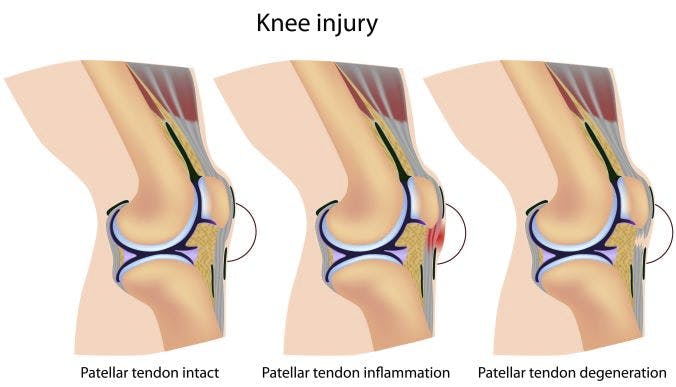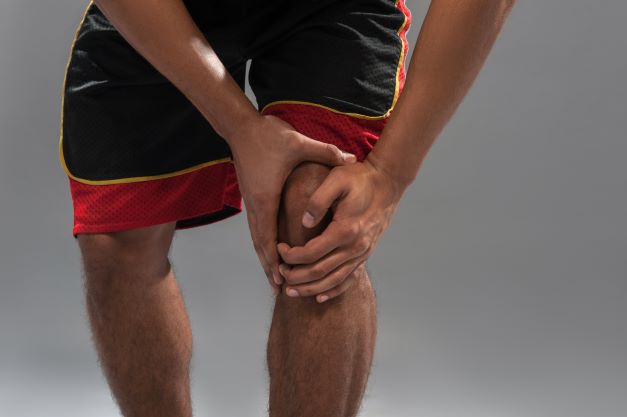Jumper’s knee, or patellar tendinitis, is common in basketball and volleyball players. Across all sports, up to 22% of elite athletes report patellar tendon pain at some point during their career. New research shows specific isometric exercises done in-season eases Jumper’s knee pain. This article teaches you how to begin this proven treatment.
You feel pain from Jumper’s knee just below your knee cap. Here, your patellar tendon connects your knee cap to your lower leg bone (tibia). Jumping and landing require forceful contractions of your quadriceps muscle. These contractions load your patellar tendon. The repetitive jumping involved in many sports excessively loads your patellar tendon. Overuse, muscle weakness, and poor jumping and landing mechanics contribute to tendon overload.

The start of your pain indicates an inflamed tendon. But the inflammation does not last long. Persistent pain indicates a weakened and degenerating tendon. Specific exercises are done for your body to repair the degenerative tendon.
Isometric Quadriceps Exercises Proven to Relieve Jumper’s Knee Pain
A group of researchers from Australia compared the effects of 2 exercise programs for in-season athletes with jumper’s knee. One group performed traditional leg extension exercises on a weight machine. These participants performed 4 sets of 8 repetitions on 4 days each week. They were encouraged to move the weight through a full range of motion.
The other group did isometric exercises on the same weight machine. Instead of moving the weight, these participants performed a static hold muscle contraction for 45 seconds. Participants did the isometric exercise at 80% of their maximum effort.
After 4 weeks of training, both groups reported decreased pain. However, the athletes who did the isometric exercise reported 2x the improvement. Isometric exercises provide athletes with an effective way to exercise and reduce pain during the competitive sports season.
How to Perform Isometric Exercises for Jumper’s Knee
To get started, sit with your leg hanging freely. A typical leg extension machine in your local gym works well for this purpose. In the clinic, we use a high treatment table. You will need something solid and immovable to push against. We use a tough belt strapped to the treatment table on one end. The other end is wrapped tightly over your lower leg.
Your knee is positioned so it is bent at about a 60-degree angle. With about 80% of your maximum effort, push into the belt or weight machine. No movement occurs. Hold this contraction for a full 45 seconds. Maintain regular breathing patterns. Rest 1 minute between each repetition so your muscles fully recover. Perform a total of 5 repetitions.
Perform the isometric exercise 4 days per week. Mild pain during the exercise is acceptable and expected. Continue this protocol until the end of your competitive season. Once you reach your off-season, rehabilitation takes on a new approach.
See Your Physical Therapist for a Comprehensive Rehabilitation Program
The isometric exercise protocol described in this article is intended to be done during your sports season. It is an effective way to decrease pain from Jumper’s knee so you can make it through your season. High-intensity complex exercises will help you fully recover during the off-season. Otherwise, your problem will become chronic like many other athletes.
To beat Jumper’s knee for good you will need to work with a physical therapist. Your physical therapist will fully evaluate your strength, mobility, and movement patterns. Once all contributing factors are identified, a comprehensive rehab program is developed.
Call our office to get started. The doctors of physical therapy at BSR have been helping people in Southern Ocean County move without pain since 2007. We are here to help you.

